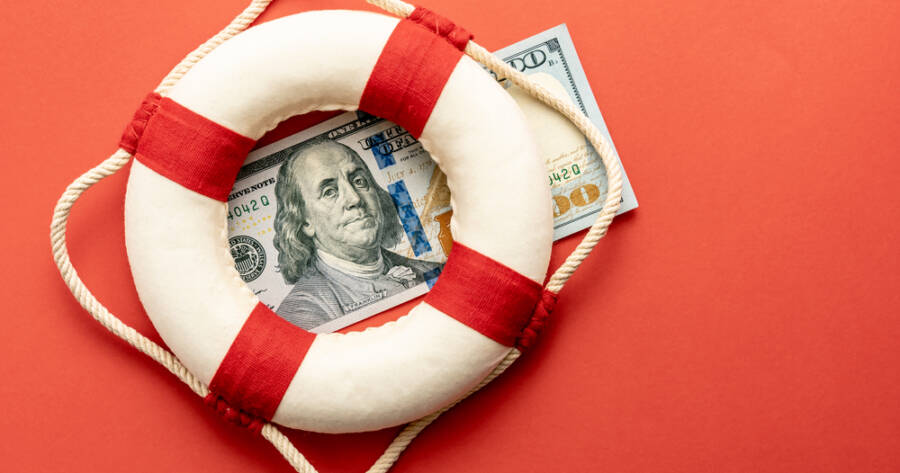Saving for an emergency fund doesn’t mean giving up your favorite coffee, skipping vacations, or living on a strict budget. With the right approach, you can build financial security while still enjoying the things that make life fun! Small, strategic changes make it possible to save without feeling deprived. A solid emergency fund provides peace of mind, giving you financial stability without sacrificing your lifestyle.
Set a Realistic Savings Goal
Building an emergency fund feels overwhelming when you don’t know how much to save. Instead of aiming for an arbitrary number, start by setting a realistic goal. Experts recommend three to six months’ worth of living expenses, but even $500 can provide a safety net.
Break your goal into smaller, manageable milestones, like saving your first $100, then $500, then $1,000. This approach makes the process feel achievable and keeps you motivated. Use a high-yield savings account to earn interest while keeping your money accessible.
Tracking your progress through a budgeting app or savings tracker adds accountability. By setting a clear, attainable goal, you can build your emergency fund step by step without feeling overwhelmed.
Automate Your Savings Without Thinking About It
Saving money is easier when it happens automatically. Set up an automatic transfer from your checking account to your savings account each payday. Even small amounts, like $10 or $20 per week, add up over time without disrupting your budget. Many banks offer “round-up” savings programs, where your purchases are rounded to the nearest dollar and the spare change is deposited into savings.
Another option is using budgeting apps, which analyze your spending habits and transfer small amounts to savings without affecting your lifestyle. By automating your savings, you remove the temptation to spend first and save later. Without even noticing, you’ll be growing your emergency fund while still enjoying your daily life.
Cut Hidden Expenses Instead of Big Luxuries
Saving doesn’t have to mean sacrificing the things you love. Instead of eliminating favorite activities, look for hidden expenses you won’t miss. Review your bank statements for unused subscriptions, high banking fees, or unnecessary impulse purchases. Canceling an underused gym membership or switching to a no-fee checking account can free up extra cash.
Negotiating lower rates on bills, like internet or insurance, also helps. Consider meal planning to cut food waste or using cashback apps to save on groceries. Small changes, like bringing lunch to work twice a week instead of every day, allow you to save without feeling deprived. By trimming unnecessary expenses, you can redirect money into your emergency fund while maintaining your favorite splurges.
Earn Extra Cash Without a Second Job
Boosting your savings doesn’t always require working more hours. Finding creative ways to earn extra cash can speed up your emergency fund without taking over your free time. Selling unwanted items on platforms like eBay, Poshmark, or Facebook Marketplace can turn clutter into cash. If you enjoy a hobby like photography, writing, or crafting, consider turning it into a small side hustle.
Cash-back apps, paid surveys, and renting out unused space (like a parking spot) can also generate extra income. Another option is participating in sign-up bonuses for banks or credit cards that offer cash rewards. By making money in small, low-effort ways, you can build your savings faster without feeling overworked.
Make Saving Fun with Challenges and Rewards
Turning savings into a game makes it more enjoyable and easier to stick with. Try fun challenges like the “$5 challenge,” where you save every $5 bill you get, or the “no-spend weekend,” where you skip unnecessary purchases for two days. The 52-week challenge, where you start by saving $1 in the first week and increase by $1 each week, can add up to over $1,300 in a year.
Another approach is rewarding yourself for hitting savings milestones—treat yourself to a small luxury (within budget) when you reach a goal. Using visual trackers, like a savings jar or progress chart, can keep you motivated. Making saving fun ensures you stay committed without feeling like you’re missing out.
Use Unexpected Money to Grow Your Fund Faster
Windfalls (like tax refunds, bonuses, or birthday money) are great opportunities to boost your emergency fund without affecting your day-to-day budget. Instead of spending unexpected cash, commit to saving at least a portion of it. Even saving just half of a bonus or refund can make a huge difference in reaching your goal faster.
If you receive cash gifts or rebates, deposit them directly into savings before the temptation to spend sets in. Found money, like class-action settlements, cashback rewards, or even spare change, can also add up over time. Redirecting these financial boosts toward savings allows you to build your emergency fund with minimal effort while keeping your regular spending habits intact.
Save Smart, Live Well, and Stay Prepared
Building an emergency fund doesn’t mean sacrificing the things that bring you joy—it’s about making intentional choices with your money. By automating savings, cutting hidden costs, and using creative strategies to boost your fund, you can prepare for the unexpected while still enjoying life.
Small, consistent efforts lead to big financial security over time. The key is balance—save wisely, spend mindfully, and give yourself the freedom to enjoy today while securing your future.

